

William Stopford
Every SUV, ute and van discontinued in Australia in 2025
8 Hours Ago
The way the McLaren 750S obliterates race circuits and rides over age-old cobblestones shouldn’t be possible – but that’s what it does.
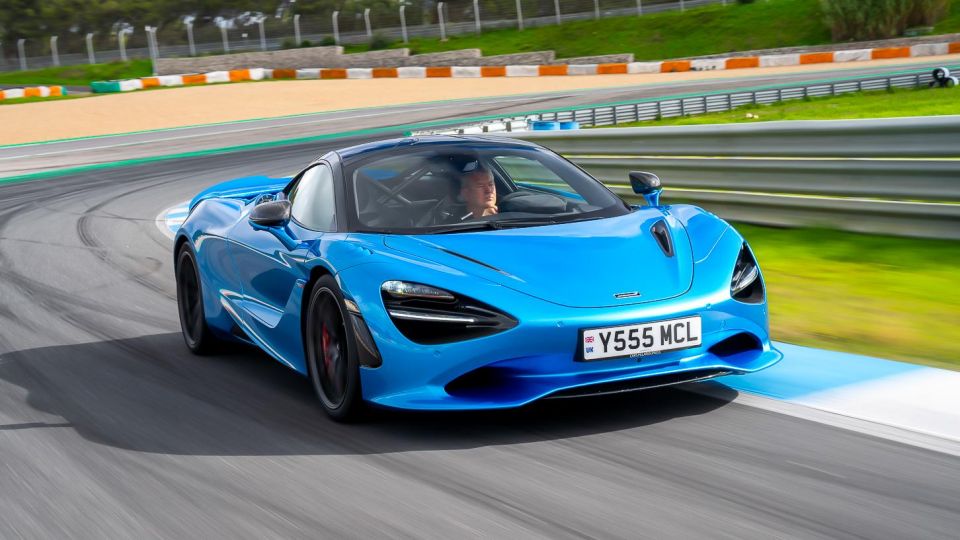
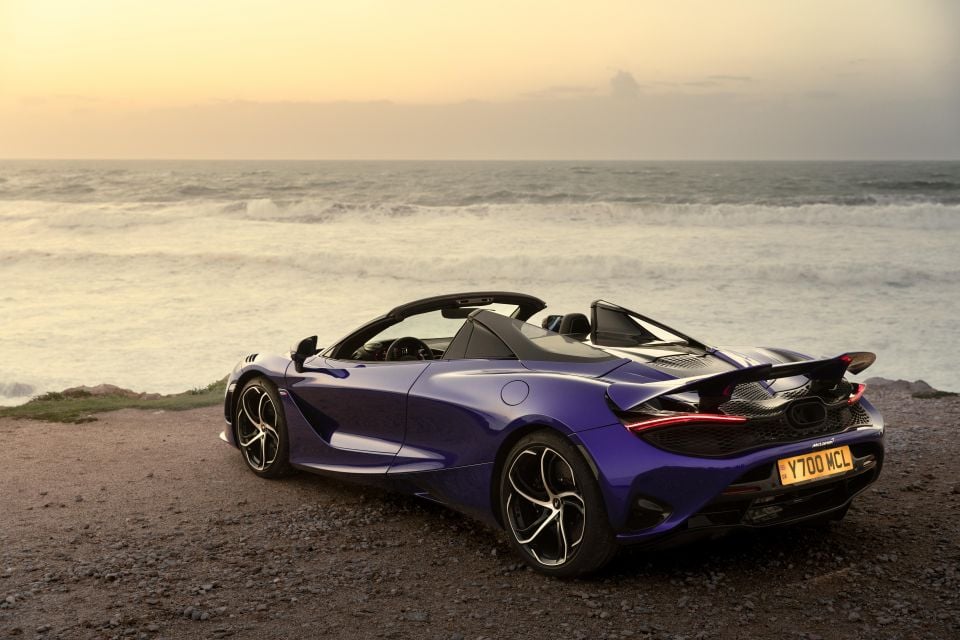

Senior Road Tester

Senior Road Tester


Senior Road Tester

Senior Road Tester
Where expert car reviews meet expert car buying – CarExpert gives you trusted advice, personalised service and real savings on your next new car.
I’ve got the throttle pinned and it’s showing 280km/h plus down the main straightaway at Estoril in Portugal and I’m not braking until just past the 200m mark – because that’s what you can do in the new McLaren 750S.

McLaren didn’t bother benchmarking any of its rivals when it was developing the new 750S super sports car – it just used its best-selling 720S and some inspiration from the hardcore 765LT to bump things up around 30 per cent across all key performance parameters.
It turns out McLaren had been approached by various customers from other brands who were really interested in a more exciting car from the marque – dare I say, more engaging.
It’s quite the ask given I drove the 720S on several occasions when free of any speed constrains and not once never did it cross my mind that this was a supercar somehow lacking in driver engagement. To me it was a car built by purists for purists, and had no peers.
Still, turning up the wick is what McLaren does exceptionally well. They’re old hands at it having developed several of its hardcore ‘LT’ models over the years.
The end result is they’ve injected an acceptable dose of the 765LT’s more potent venom into the 750S, but without robbing the car of its trademark everyday driveability – by any measure a difficult task.
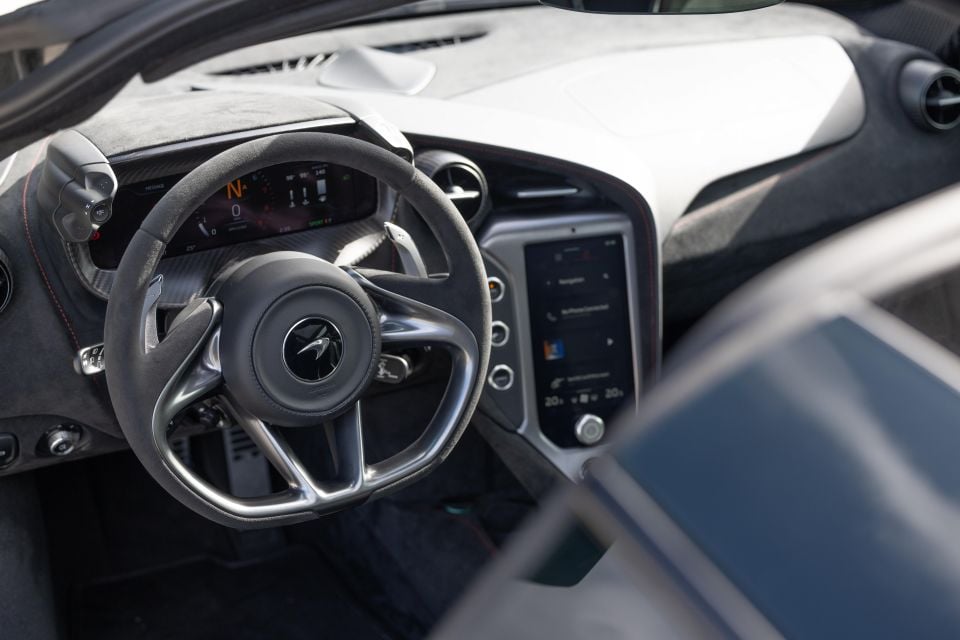
To the casual observer it might look dangerously close to its predecessor, at least from the outside, but McLaren doesn’t really do nip and tucks or even facelifts. Rather, it takes an obsessive, if not, forensic approach to uprating overall performance and driveability, and from where I sit the 750S is a flawless example of how to enhance perfection.
With McLaren it almost always starts with weight minimisation, especially unsprung weight where every gram counts. As a top-flight Formula 1 constructor, it’s been a cornerstone of the brand from its earliest days in the racing business.
To that end the 750S epitomises that weight-saving philosophy in spectacular fashion. This is a supercar that stands almost 200kg lighter than its closest competitor thanks to a number of innovative engineering solutions, and it’s quite the lightweight menu.
For starters, the standard-fit carbon fibre-shelled racing seats are 17.5kg lighter than the base seats in the 720S. While the active rear wing which also covers 20 per cent more area than 720S saves another 1.6kg. Even the exhaust system is brand new and shaves 2.2kg of the previous version.
Finally, the split-size wheels are lightest ever fitted as standard equipment on a series production McLaren and save a significant 13.8kg of unsprung weight.
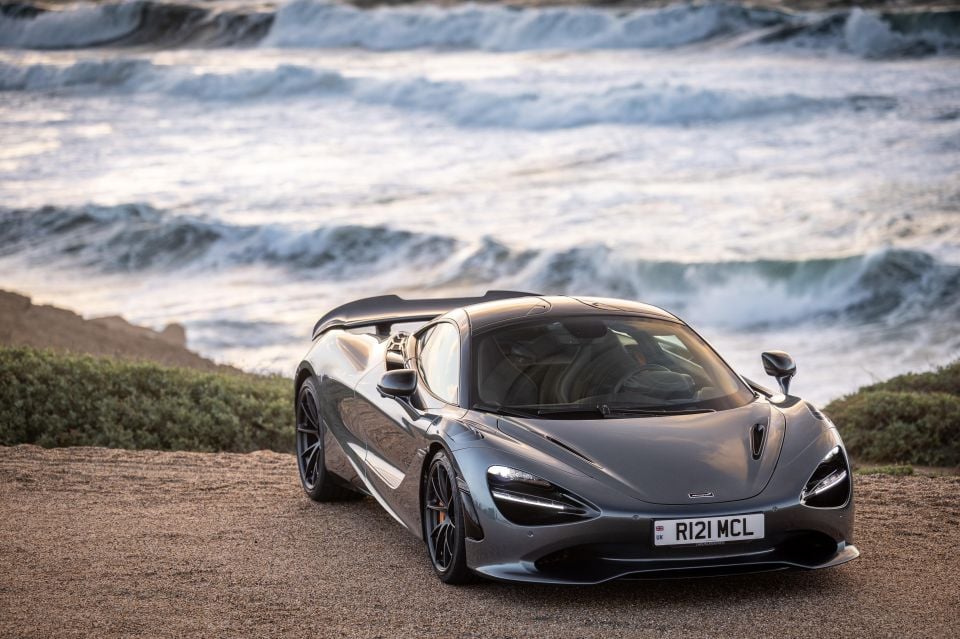
And while the bodywork might look almost identical as a casual glance, rest assured it’s been honed to the nth degree for improved aero, high-speed stability and increased cooling for the more powerful brakes fitted.
All up, McLaren claims the 750S is around 30 per cent new or changed under the skin along with more power and torque from its twin-turbocharged 4.0-litre V8, as its designated nomenclature suggests (750hp).
Not only is the 750S the lightest and most powerful series production McLaren ever, it also becomes the ‘segment-leading’ benchmark in the power-to-weight stakes too. Cranking out 432kW per tonne it outperforms its closest rival – Ferrari’s 296 GTB plug-in hybrid which peaks at 406kW per tonne.
McLaren said it also worked on enhancing the car’s agility and driver engagement over the 720S, with a shorter final drive that claims 10 per cent faster acceleration, quicker steering and increased handling adjustability from throttle, brake and steering inputs.
Right from the outset the 750S was designed to be a sharper instrument which meant there were mandatory hardware and calibration changes needed to cope with the higher loads across all major controls.
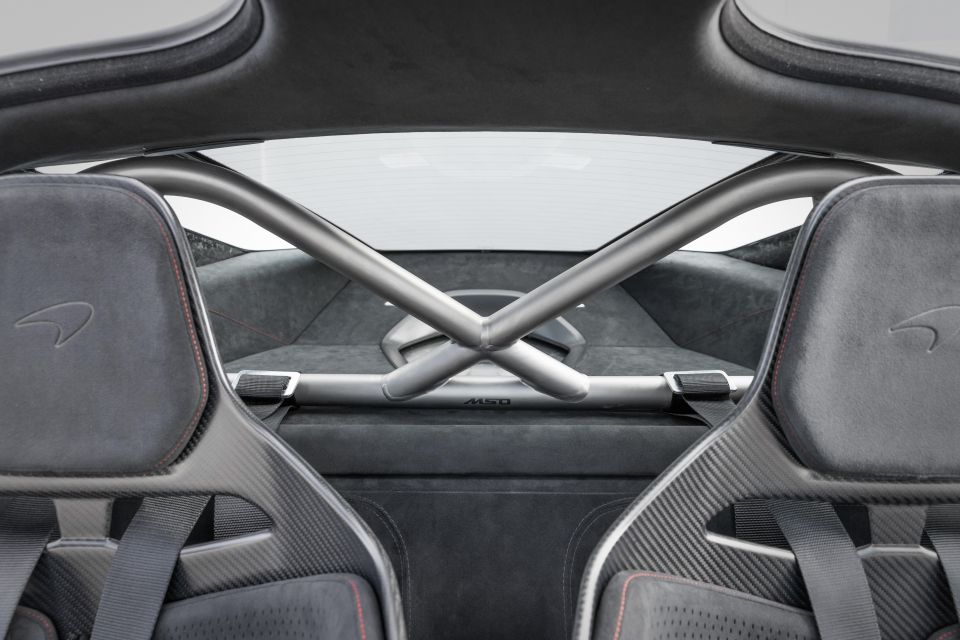
The car’s revised geometry demanded a 6mm wider front track for not only insane levels of turn-in grip but to better handle bump steer, according to Charles Sanderson – McLaren’s Aussie-born chief technical officer. Let me attest to that right here before we get into the nitty gritty of its performance further into the review.
New lightweight springs were fitted shaving another 2.0kg off, as well as changes in the spring rates. Even stiffness has been revised – now 3.0 per cent softer up front and 4.0 per cent stiffer at the rear.
Damping has been enhanced too, thanks to bespoke twin-valve shock absorbers that use a combination of active and passive elements for better ride comfort and stability at the same time. Even the front lift system on the 750S raise the nose in half the time it took on the 720S. Just 4.0 seconds is all it needs to lift that extended front splitter out of harm’s way.
For those that think the new 750S looks pretty much like a carbon copy of its forebear – you’ll need to look more closely. Suffice to say there’s a fair bit going on but it’s still an evolution rather than entirely new-generation car.
Both front and rear ends have been redesigned with a narrower headlight assembly though still called ‘eye- sockets’ which also double as air intakes. Likewise with those built into the sills and new vented rear wheel arches.
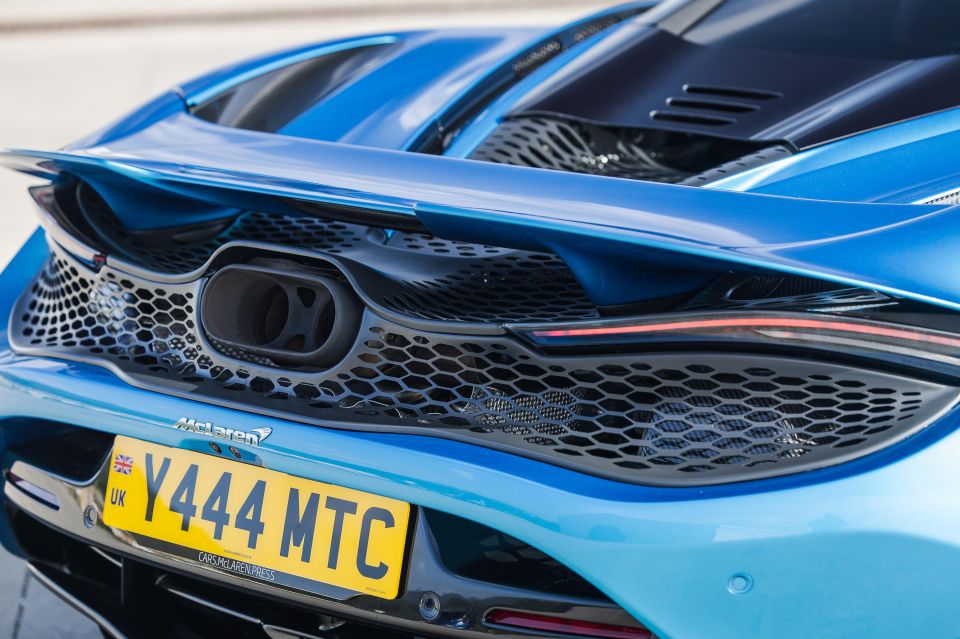
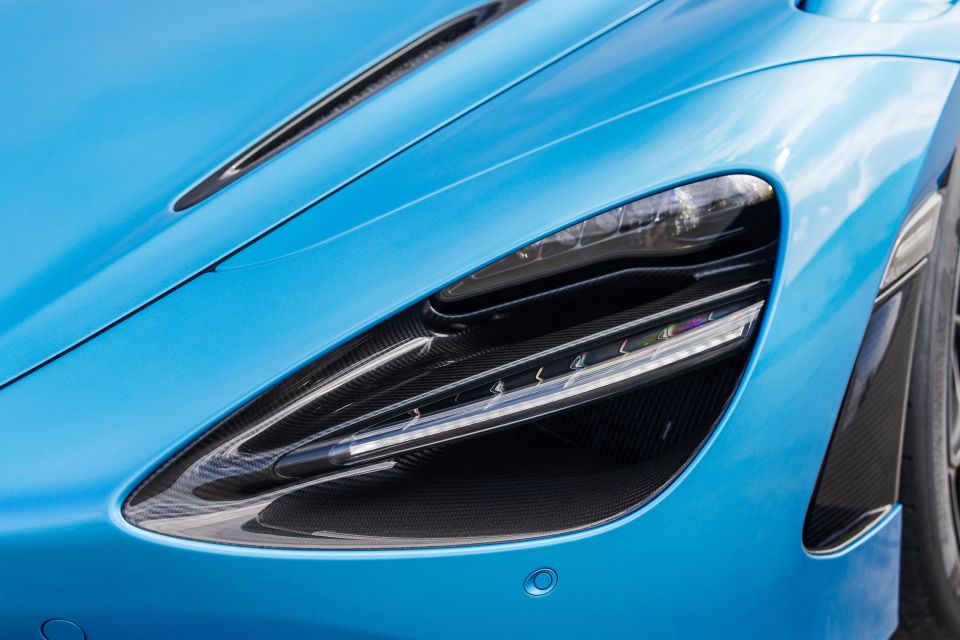
Around back things look decidedly similar except for the larger carbon-fibre rear wing and a lot more lightweight mesh that makes up most of the rear deck and below. There’s a massive amount of cooling back there when you realise the whole thing is virtually one big open-air opportunity to jettison hot air from the engine bay.
And let’s face it, the 720S’s exhaust note never really reached the intoxicating levels of its rivals. To that end the 750S gets a new lightweight centre-mounted single pipe inspired by the McLaren P1 – for a more ‘distinctive crescendo’.
Technically the 750S might be an evolution but so vast are the incremental changes throughout the entire car (inside and out) it most certainly undersells what has been achieved here in both Coupe and Spider form.
The McLaren 750S launches with both Coupe and Spider versions at the same time with local deliveries commencing.
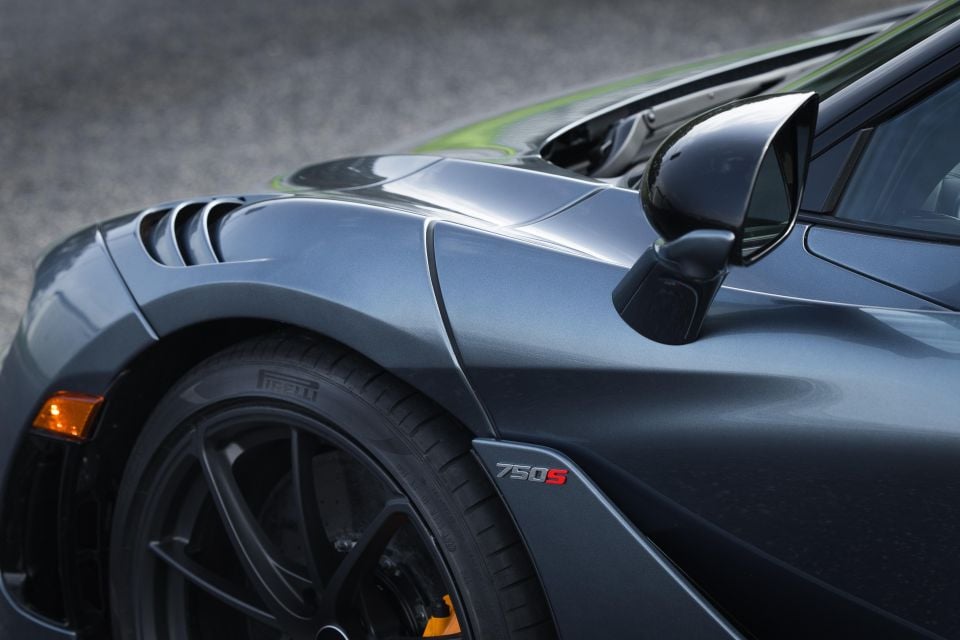
It’s closest and only rival is the Ferrari 296 GTB plug-in-hybrid priced from $568,300, while the 296 GTS (Spider) wears a sticker price of $668,146.
2024 McLaren 750S pricing:
Prices are excluding on-roads
Buy your new car without the stress. It's fast, simple and completely free.

Great service from Travis and team, second time I have used this business would not hesitate to recommend them to anyone
Craig C.
Purchased a Ford Ranger in Sunshine Coast, QLD
CarExpert helped Craig save thousands on his Ford Ranger, now let us save you on your next new car.
Find a dealThe 750S might get floor-to-ceiling Alcantara and the shiny bits are all real metal but this is still a wonderfully stark place dedicated to the genuine enthusiast where luxury consists of an automatic front left system, Apple CarPlay and an electrically adjustable steering column.
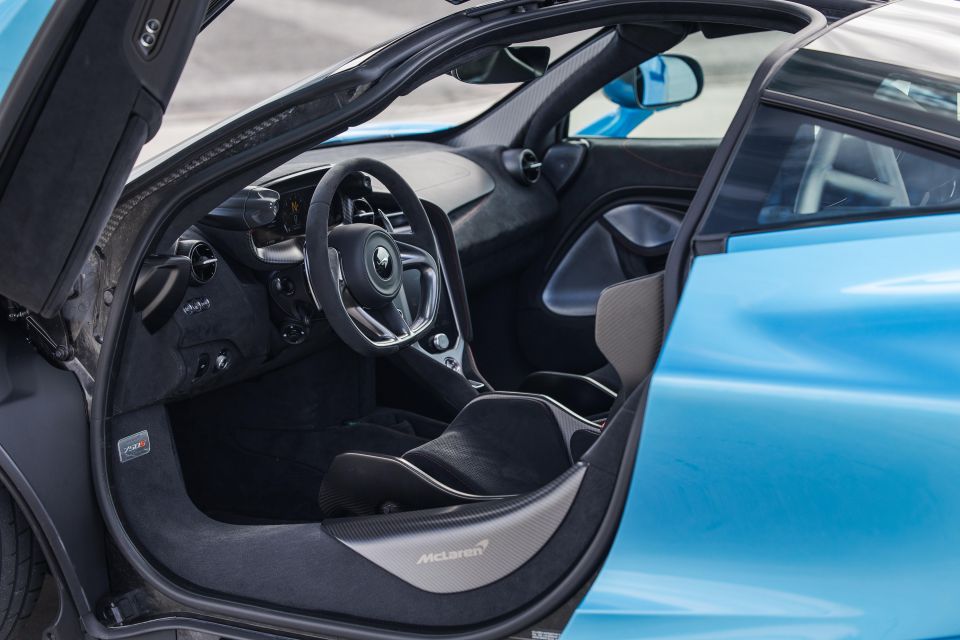
Buyers get the choice of Comfort seats or Carbon-fibre racing seats.
Most will choose the racing pews for their weight saving benefits and track-friendly levels of bolster. However, we also drove the Spider which had the Comfort seats which were more suitable should you want to daily your 750S.
Nevertheless it’s still very much a driver-centric place to be but the new digital instrument display now moves with the steering wheel column for unencumbered forward vision – no matter what your driving position.
Oh, and the instrument display itself is lighter by 1.8kg. Even the windscreen glass provides a 1.6kg saving.
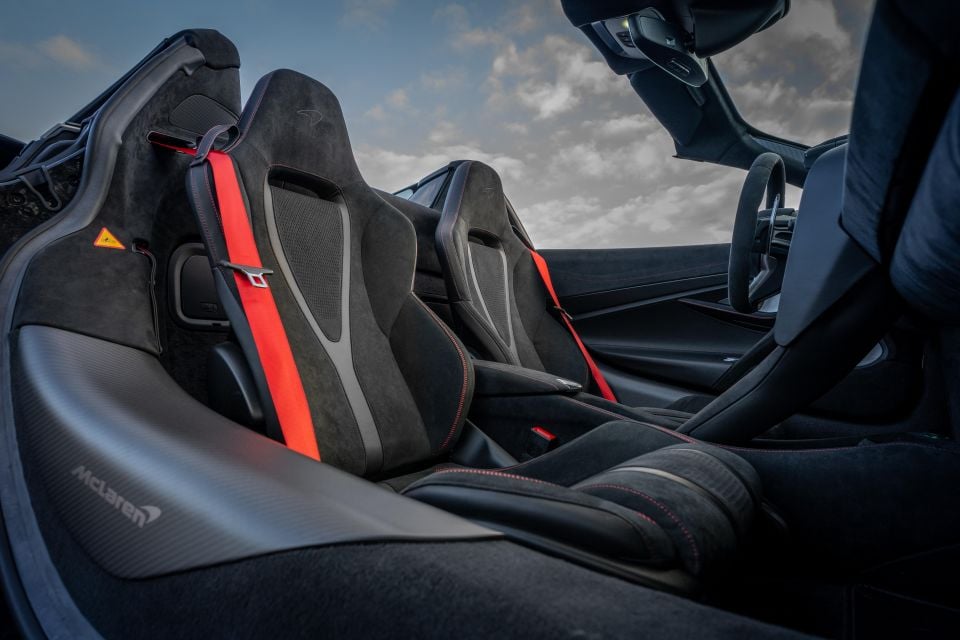
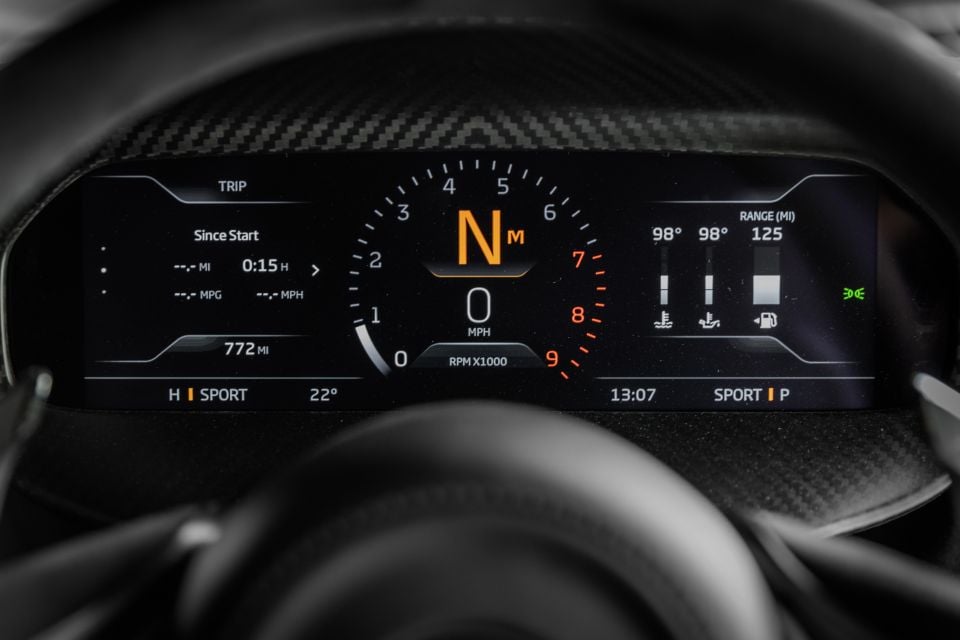
You’ll appreciate the McLaren’s take on steering wheels too, not for the hand-stitched Alcantara wrap but for the complete and utter absence of a single button, switch or mini touchpad.
There’s no need for the driver to take their hands off the steering wheel either, thanks to rocker switches either side of the binnacle that control drive modes and suspension settings.
Gone are those annoying ‘active’ buttons that simply served to confuse all and sundry, though you’ll want the ‘Manual’ button occasions just for the surround-sound aural feast when you’re rifling up and down the gear ratios.
It’s a cleaner look all round which leaves space for a small row of shortcut buttons down one side of the 750S’s new 8.0-inch central touchscreen.
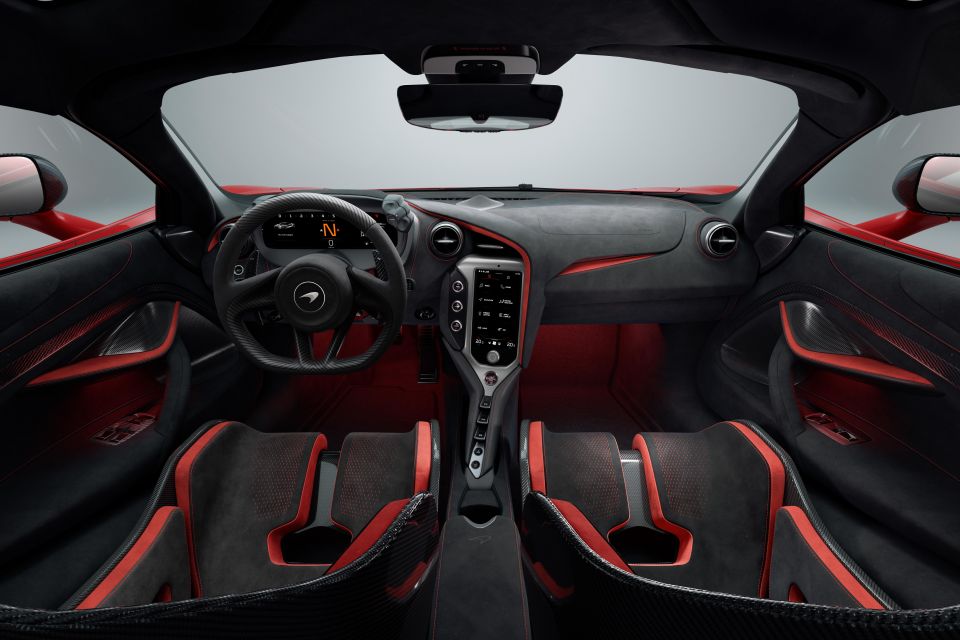
The most useful of these will surely be the centre button marked McLaren logo and used to store the driver’s preferred settings for aero, handling, engine and transmission.
The infotainment screen is of noticeably higher-definition and decently quick to respond to touch. One of the journalists reported an infotainment blackout but I think we’ll put that down to pilot error or a dodgy lightning cable.
Apple CarPlay is now a standard inclusion in the 750S and there’s both USB-C and A ports for charging iPhones. And for what it’s worth, ours worked faultlessly over back-to-back road drives in both Coupe and Spider versions.
McLaren also claims the in-car voice command is higher functioning than before and able to better recognise speech but we didn’t dare risk upsetting pre-existing nav settings for fear of losing valuable track time should we have taken a wrong turn.

Storage for keys, phones and sunnies will only just get you by, but at least there’s two cupholders. The largest space is found under the infotainment bridge – though it’s not the easiest space to access. Same goes for the console box.
Nevertheless there’s room for larger bags in the frunk (150L), and even more behind the engine bay – netting 210L for the Coupe and just 58L for the Spider – due to its retractable hard top mechanism requiring its own storage solution.
Power still comes from McLaren’s mid-mounted M840T engine which is a 4.0-litre twin-turbocharged V8 with a flat-plane crankshaft, but now making 552kW of power and 800Nm of torque going to the rear wheels via a seven-speed dual-clutch gearbox.
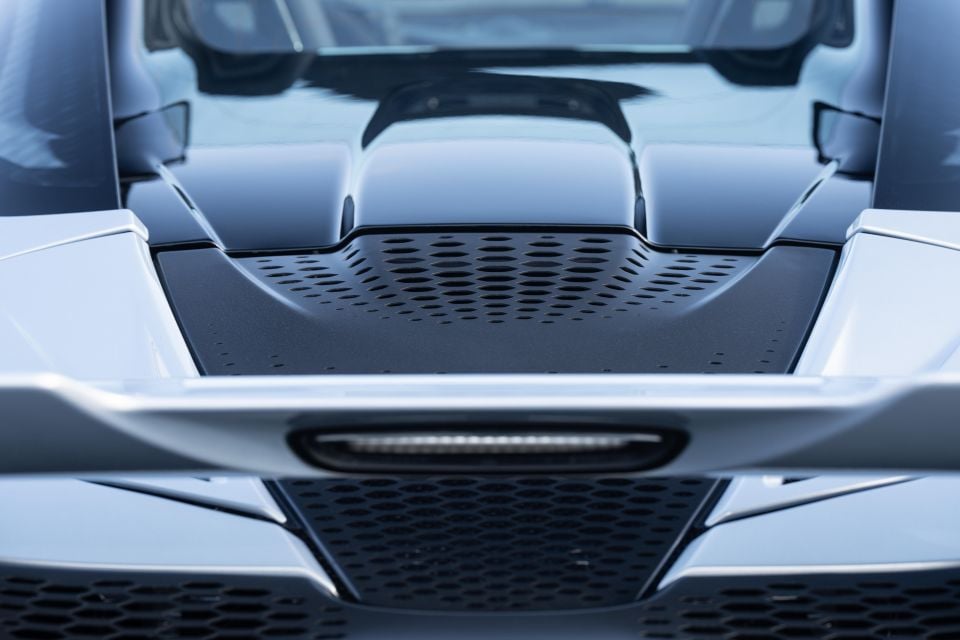
While it amounts to 30kW/30Nm more than it made in the 720S, that’s selling it a bit too short given it’s still a significant upgrade as far as internal components go.
There’s a new triple-layer head gasket, twin fuel pumps, higher-pressure turbos, lightweight pistons and a new P1-inspired standard-fit sports exhaust that exits out the centre of the car’s expansive rear deck.
The gearshifts and gearbox hardware have also been evolved and now feature a 765LT-inspired 15 per cent shorter final drive ratio. Combined with a recalibrated shift map, the 750S shifts 10 per cent faster than the 720S.
That’s quite an achievement given how quick the latter could riffle through the gears. However, it only betters its predecessor by just one-tenth in its 2.8-second blitz of the 0-100km/h sprint time, while 0-200km/h is over in just 7.2 seconds (Spider 7.3 seconds).
Top speed for both Coupe and Spider is slightly down from 341km/h in the 720S to 332km/h for the 750S – moot point, really.
Like any well-orchestrated launch program covering both on-track sessions and road drives; the latter normally occurs first, allowing you to get a good feel for the car before an all-out track assault gets underway.
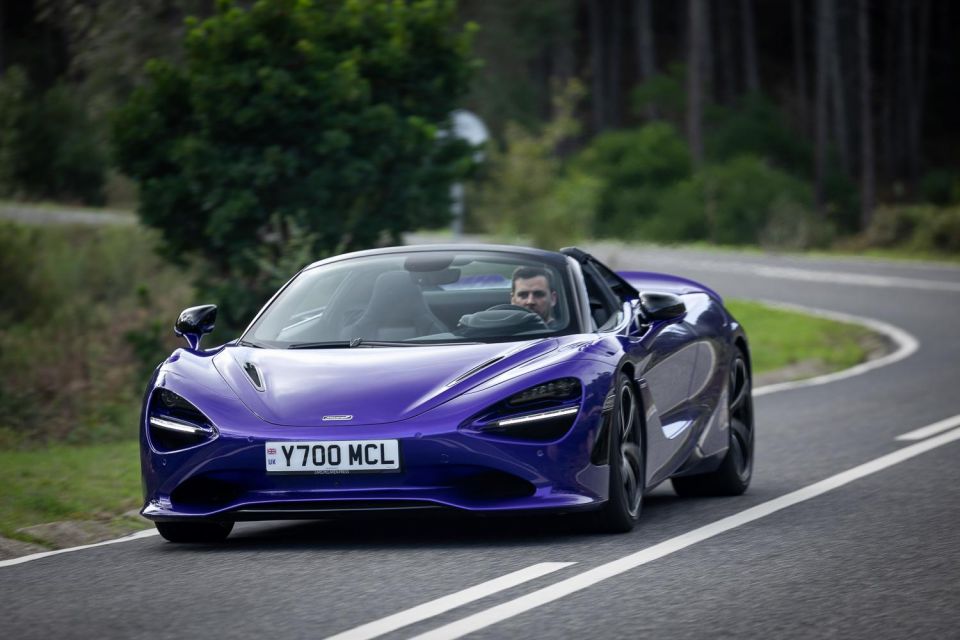
Unlucky for us, our rotation fell on a Sunday, and like most Europeans the Portuguese like to get as far away from the cities as they can – on bikes, buses and cars no less. So while we still got a decent feel for the new McLaren 750S Coupe and Spider, it wasn’t the usual hell for leather approach that normally occurs in these parts.
Nevertheless, there route itself made for a solid testing ground from ultra-smooth tarmac to age-old naturally polished cobblestones and lots of corners.
Just kicking it over is far more scintillating that I can recall in any road-going McLaren bar the 675LT, but even then there’s more of that rising ‘crescendo’ that the McLaren team were banging on about.
That said, it still falls short of the Ferrari 296GTB in that department but it’s a huge improvement over the gruff-sounding exhaust notes in previous models.
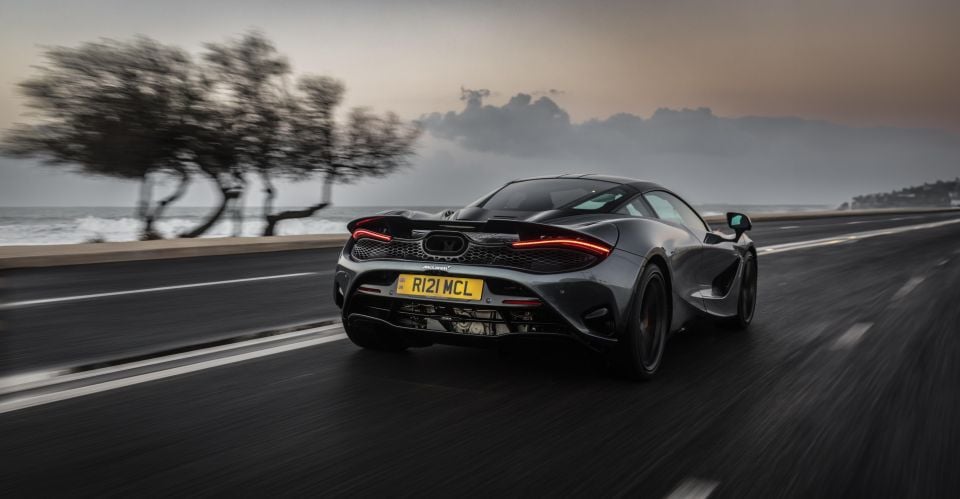
Where expert car reviews meet expert car buying – CarExpert gives you trusted advice, personalised service and real savings on your next new car.
You’ll want to stick it in Sport mode at the very least for a the genuinely delightful noise, as well as nothing less than furious point-to-point pace between the endless twisties.
There’s no lag, not even from crawl pace and throttle response is frighteningly quick thanks to those faster gearshifts. That you can feel from the get-go.
The extra boost pressure is best experienced on track, though. Acceleration is so devastatingly quick that you’ll likely overcook things a bit until you’ve recalibrated your throttle inputs. As the saying goes – smooth is fast, especially in the 750S.
Power delivery is still linear but it just builds with such intensity as to catch you off guard once or twice. Mind, the grip levels and all-round feedback allow for the smallest steering corrections regardless of where you are through the corner.
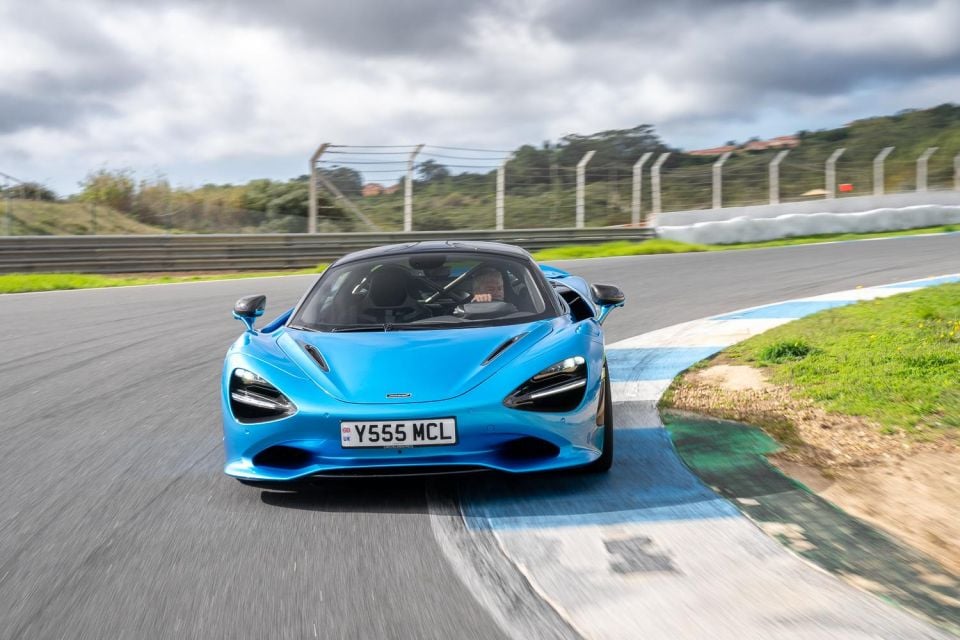
If chassis balance was peerless on the 720S (and it was), the 750S adds even more controllability to McLaren’s underbody sorcery. I don’t believe there’s another series-production supercar out there that can be pushed this hard and with such high levels of confidence by those in the driver’s seat for the first time.
It’s also a car that can be pushed significantly harder than you might imagine. No doubt the chassis and its track-focused Pirellis have limits but we didn’t find them on this attempt – not even after three decent track sessions.
It also rotates like no other supercar I’ve driven, but again, with so much feedback through the steering wheel, you’ll feel like a seasoned pro. It’s masterful engineering because I know I’m not that good.
Then there’s the braking. Sure it’s got decent-size carbon-ceramics fitted as standard but this braking system is on another level. You can still bury the brake pedal with more force than you’ve ever used and frighteningly late too, but still there’s no shudder or ABS-induced pulsating – it just wipes off the required pace and off you go again.

Pedal feel isn’t like any other supercar I’ve driven, either. There’s a bit more pressure required but again, it’s linear and there’s just as much feel on the road as the track. It’s massively reassuring, when you consider these cars were cycled through 20-30 journos, lap after lap and no fade. Remarkable.
When McLaren’s CTO on the 750S, Charles Sanderson, told us they’d dialled some performance levels from the 765LT – I assumed ride comfort might be compromised slightly – and I accepted that. But it’s not – not at all. In fact, even over cobblestones and in Sport, ride compliance is without doubt the new benchmark.
It’s a staggering engineering and technological accomplishment and likely the result of collaboration with the F1 team at some level. It’s the only plausible explanation you can draw from the driving this car.
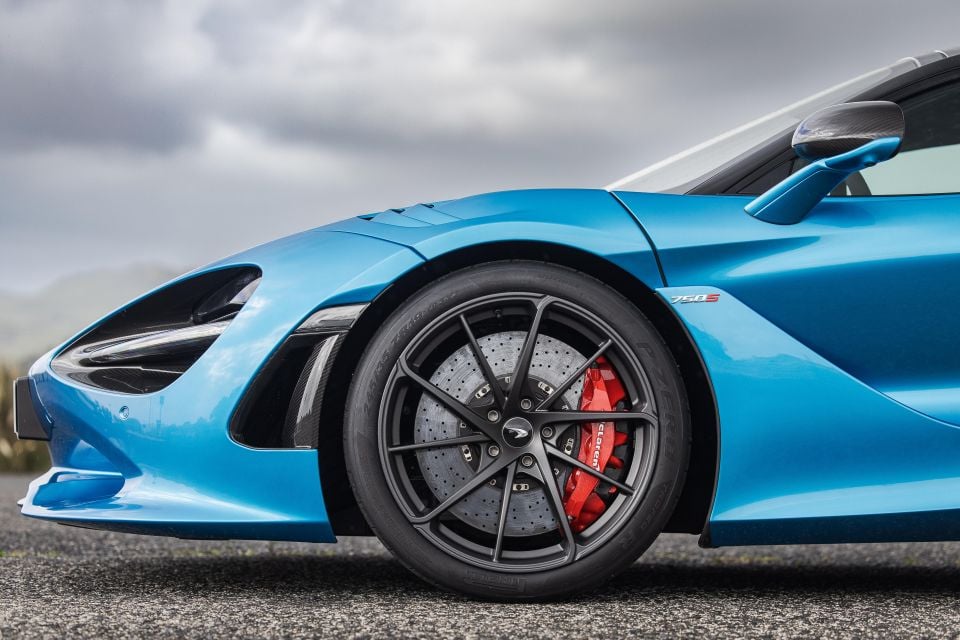
750S highlights:
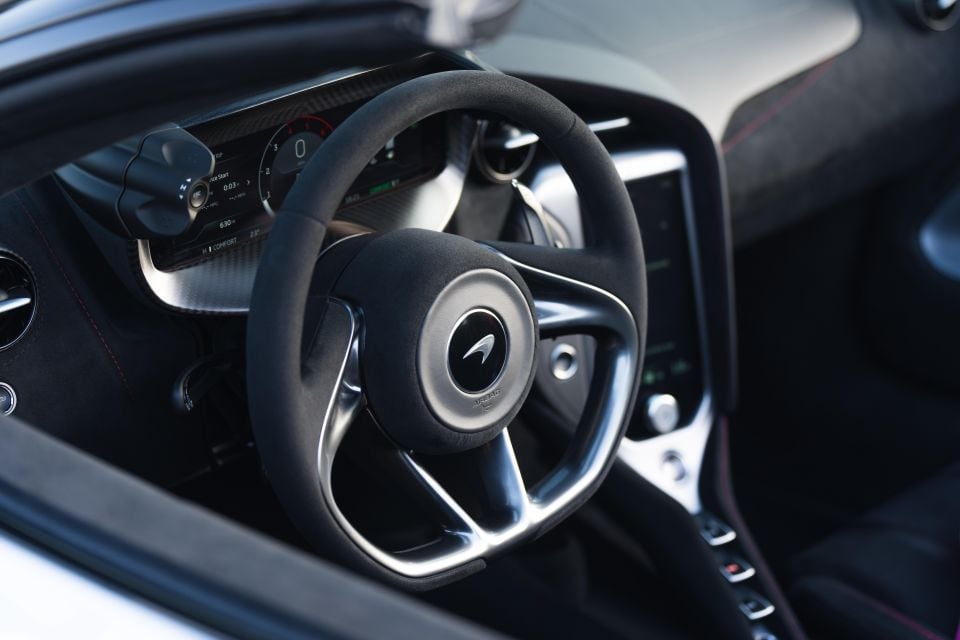
Our test car was also fitted with the following options:
While we have UK pricing – we are still waiting for local pricing and will update the review accordingly.
Like all high-end sports car brands, McLaren doesn’t crash test its vehicles due to cost.
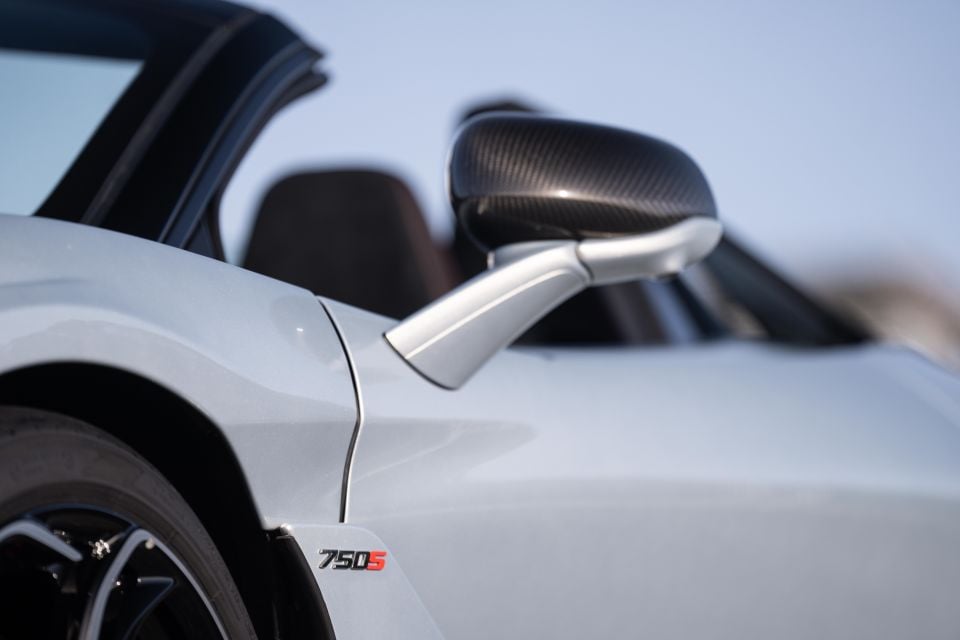
However, the 750S is fitted with driver and passenger front and side airbags, cruise control, a carbon-fibre monocoque, carbon-ceramic brakes and one of the stiffest chassis’ in the business.
McLaren covers the 750S with a three-year, unlimited-kilometre warranty from the date of the new purchase.
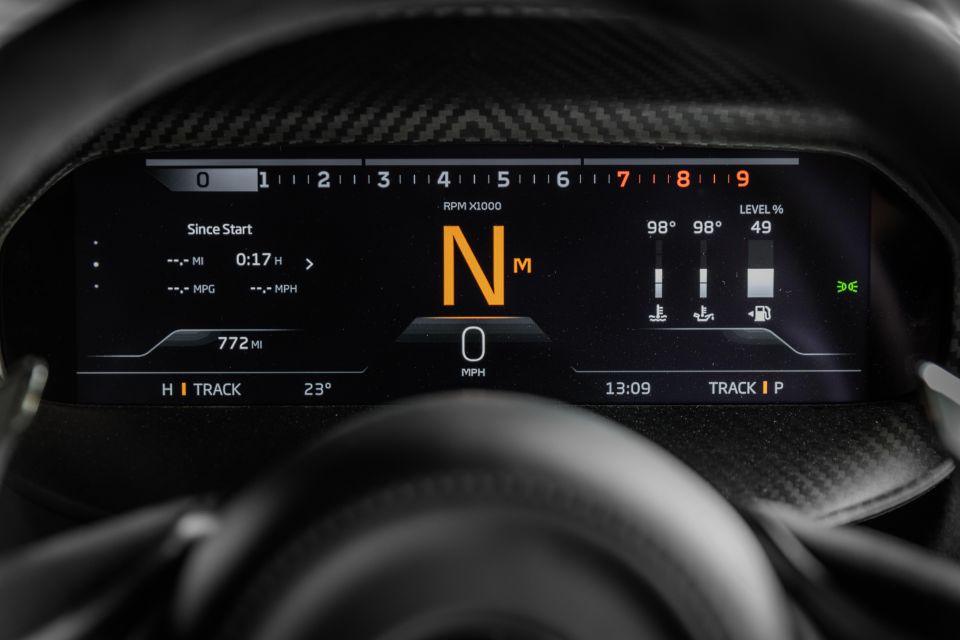
Three years of free scheduled servicing is included, with normal service intervals at one year or 15,000km – whichever comes first.
Additionally, the 750S qualifies for McLaren Extended Warranty in 12- or 24-month periods from the first purchase until the vehicle is 15 years old.
The McLaren 750S might be a ruthlessly efficient instrument of speed and agility but it’s also one of the most forgiving supercars you’re ever likely to drive and that includes rivals from Porsche and Ferrari.
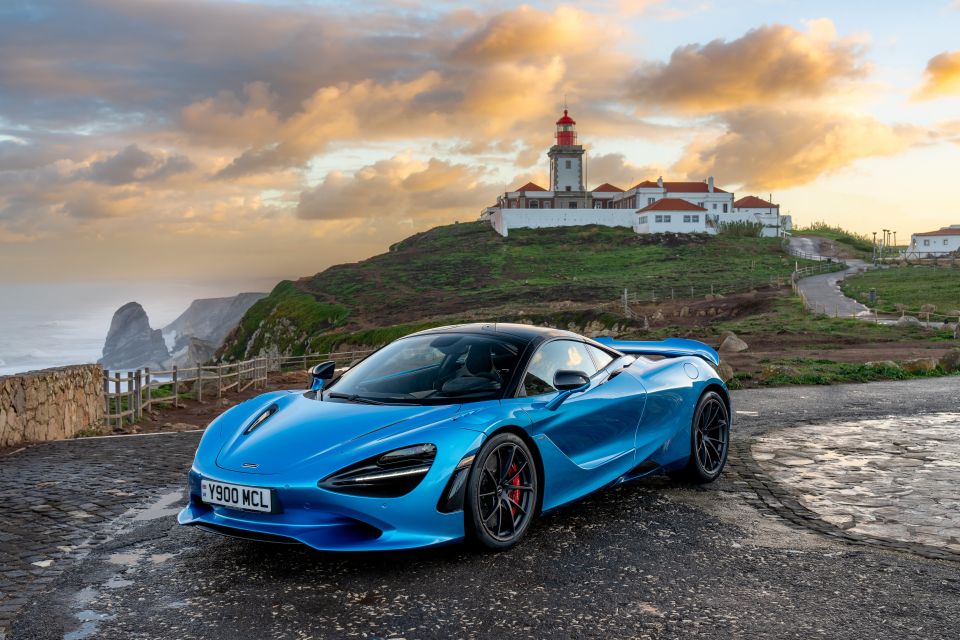
It’s on another level entirely if you count ride compliance and daily driveability as much as on-track heroics. It’s still a supercar for the devoted purist but the McLaren 750S nails its wholistic formula like no other before it.
The way it obliterates race circuits and then rides over age-old cobblestones shouldn’t be possible – but that’s what this this McLaren does.
Click the images for the full gallery
MORE: Everything McLaren 750S
Where expert car reviews meet expert car buying – CarExpert gives you trusted advice, personalised service and real savings on your next new car.
Anthony Crawford is a CarExpert co-founder and senior presenter with 20+years in automotive journalism and content creation.


William Stopford
8 Hours Ago


Ben Zachariah
9 Hours Ago


Derek Fung
9 Hours Ago


Matt Campbell
16 Hours Ago


William Stopford
1 Day Ago


Josh Nevett
1 Day Ago